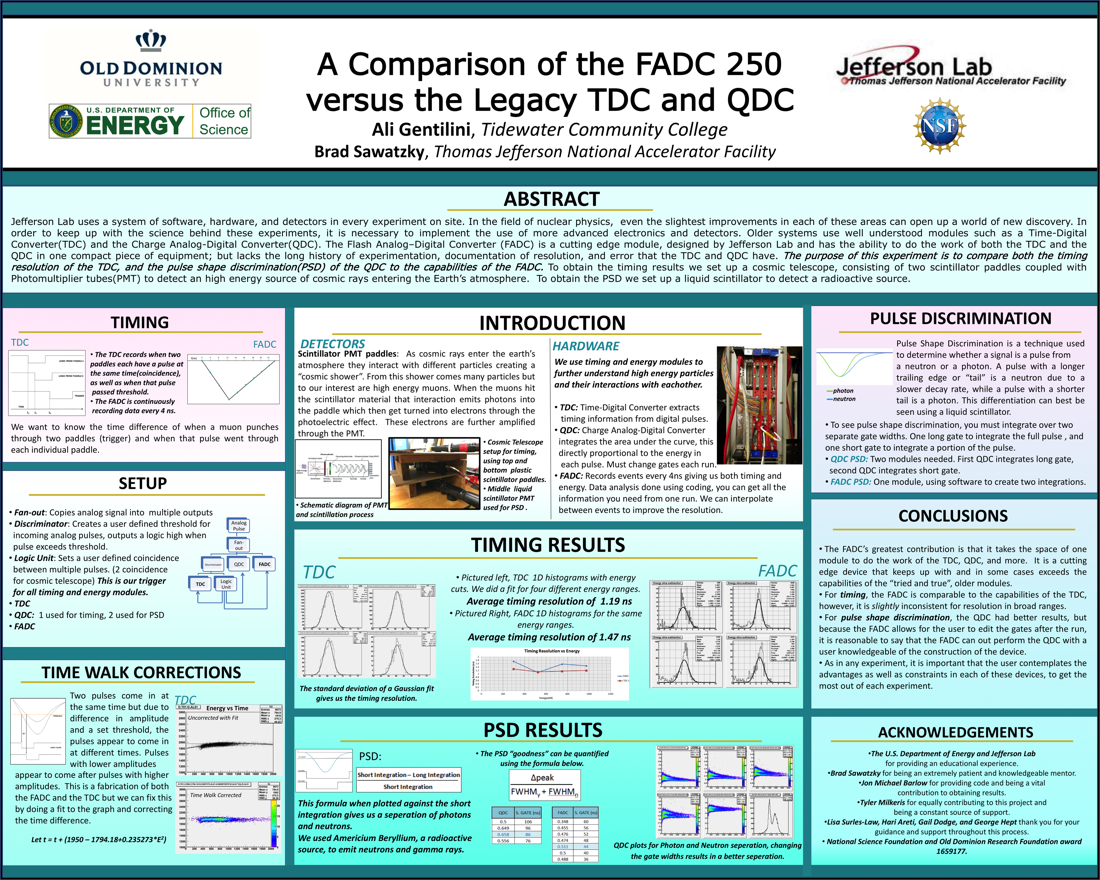Undergraduate Research at Jefferson Lab
A Comparison of the Legacy TDC to the FADC250
Student: Ali Gentilini
School: Tidewater Community College
Mentored By: Brad Sawatzky
Jefferson Lab uses a system of software, hardware, and detectors in every experiment on site. In the field of nuclear physics, even the slightest improvements in each of these areas can open up a world of new discovery. In order to keep up with the science behind these experiments, it is necessary to implement the use of cutting edge electronics and detectors. Older systems use well understood modules such as a Time-Digital Converter (TDC) and a Charge Analog-Digital Converter (QDC). The Flash Analog-Digital Converter (FADC) is a module designed by Jefferson Lab and has the ability to do the work of both the TDC and the QDC in one compact piece of equipment; but lacks the long history of experimentation, documentation of resolution, and error that the TDC and QDC have. The purpose of this experiment is to compare both the timing resolution of the TDC, and the pulse shape discrimination (PSD) of the QDC to the capabilities of the Jefferson Lab designed FADC. To obtain these results we set up a cosmic telescope, consisting of two scintillator paddles coupled with Photomultiplier tubes (PMT) to detect a high energy source of cosmic rays entering the Earth's atmosphere. The amplification of that pulse through the PMT is sent through a series of modules in addition to each respective module in question. The TDC gives us timing information, the QDC gives us energy information, while the FADC gives us both. After extracting our data and analyzing the outcomes, we found that the TDC has a better timing resolution and the QDC is better for PSD. From these findings we have found that the FADC is more reliable for a middle range of voltage, where as, the TDC and QDC have a larger range of accuracy. Each is more useful depending on the experiment. These results aid in the understanding of data analysis and will help experimentalists decipher what instrumentation is more equipped to conduct their experiment. The FADC's greatest contribution is that it can perform the same analysis as the TDC and the QDC, however, depending on the implementation it is important to decide whether that improvement outweighs the constraints.

Citation and linking information
For questions about this page, please contact Education Web Administrator.
